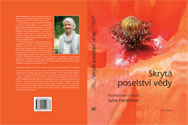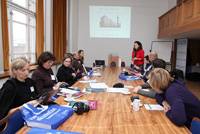Results of research by scientists from the Institute of Molecular Genetics of the ASCR have been published on the U.S. National Library of Medicine website. Their work on the STIM1-directed reorganization of microtubules in activated mast cells could help in fighting allergies. The study reports that activation of bone marrow-derived mast cells (BMMCs) induced by FceRI aggregation or treatment with pervanadate or thapsigargin results in the generation of protrusions containing microtubules (microtubule protrusions). In the study, formation of these protrusions depended on the influx of extracellular Ca(2+). Changes in cytosolic Ca(2+) concentration also affected microtubule plus-end dynamics detected by microtubule plus-end tracking protein EB1. Experiments with knockdown or reexpression of STIM1, the key regulator of SOCE, confirmed the important role of STIM1 in the formation of micro-tubule protrusions. Although STIM1 in activated cells formed puncta associated with microtubules in protrusions, relocation of STIM1 to a close proximity of cell membrane was independent of growing microtubules. In accordance with the inhibition of Ag-induced Ca(2+) response and decreased formation of micro-tubule protrusions in BMMCs with reduced STIM1, the cells also exhibited impaired chemotactic response to Ag. Institute geneticists proposed that rearrangement of microtubules in activated mast cells depends on STIM1-induced SOCE, and that Ca(2+) plays an important role in the formation of microtubule protrusions in BMMCs.













 Česky
Česky
